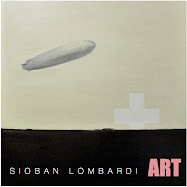about bowls
People need widgets. I make the widgets that you to sell to people. I make them so that you and I can have bowls. Because you let me make widgets for you, you may have many more bowls than me. Others make widgets for you so that they may have bowls too. Once upon a time, when we kept making more and better widgets, we got to have more bowls. The sheriff made sure you were kind to us while we were making more and better widgets every day. Then you learned that desperate people in faraway places would make widgets for a cup, rather than a bowl. These people are often very young and treated very badly, but they put up with it because a cup can change their life.
now about those widgets
Everyone needs a widget. It took a long time and hard work to make a perfect widget. People had to keep trading in old widgets to get new and improved widgets. Finally widgets were perfect and people didn’t need new ones very often. But you still wanted more bowls. So you hired some magicians. The magicians understood that people with more bowls thought they were better than people with fewer bowls. Their magic made people believe that having your new and improved widget would make them seem as though and think that they had more bowls than they actually did. Now, there are millions of old widgets lying everywhere. You don’t think the sheriff should make you clean them up even though they hurt the birds and fish.
some things I don’t understand about bowls and widgets
A few years ago you broke almost all of the bowls. The sheriff came and fixed your bowls. He hoped you would fix mine, or at least let me start making widgets again. You did neither. You just kept buying and hoarding all the bowls for yourself. It takes a lot of work to keep the bowls useful. It’s funny; it takes much more work keep my few bowls useful than it does your thousands of bowls. The sheriff helps you with your bowls, but you don’t want him to help me. I need my bowls and if they break again, I may never again be able to make widgets or use bowls.
some things you don’t understand about bowls and widgets
If I can’t make widgets and use bowls, your widgets become obsolete and your bowls seem useless. And those people with cups? They now want bowls and they have started making doodads that are better than widgets. They also make bowls. Why? Their sheriff taught them how to do so. Using his own bowls.
next time: the hocus pocus of obtaining more bowls.






